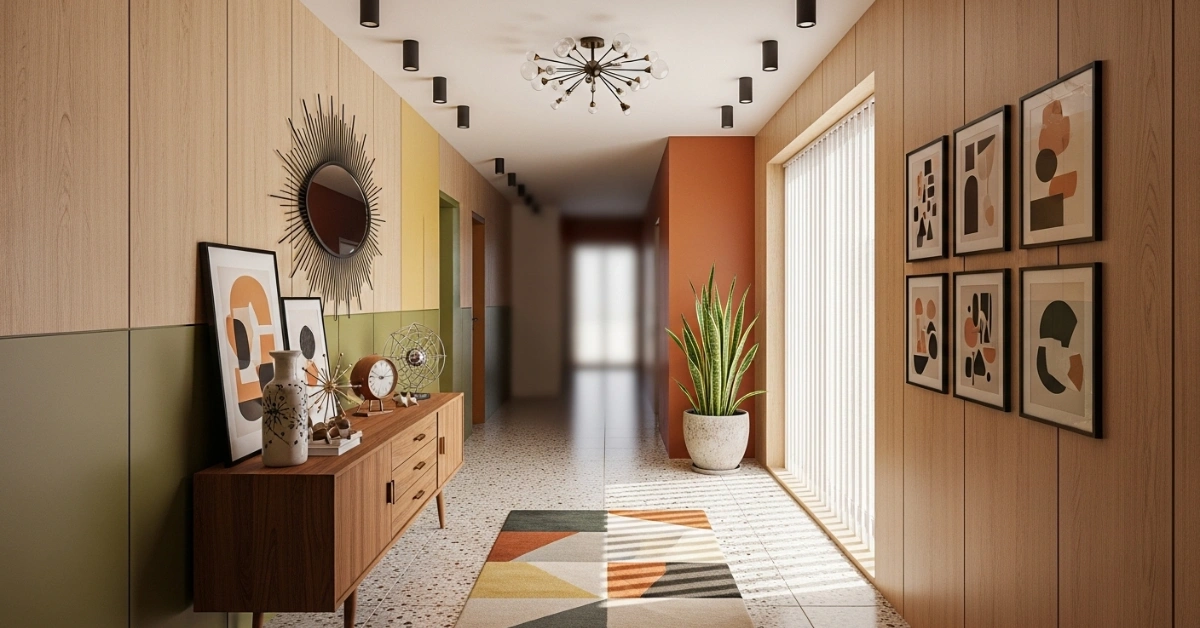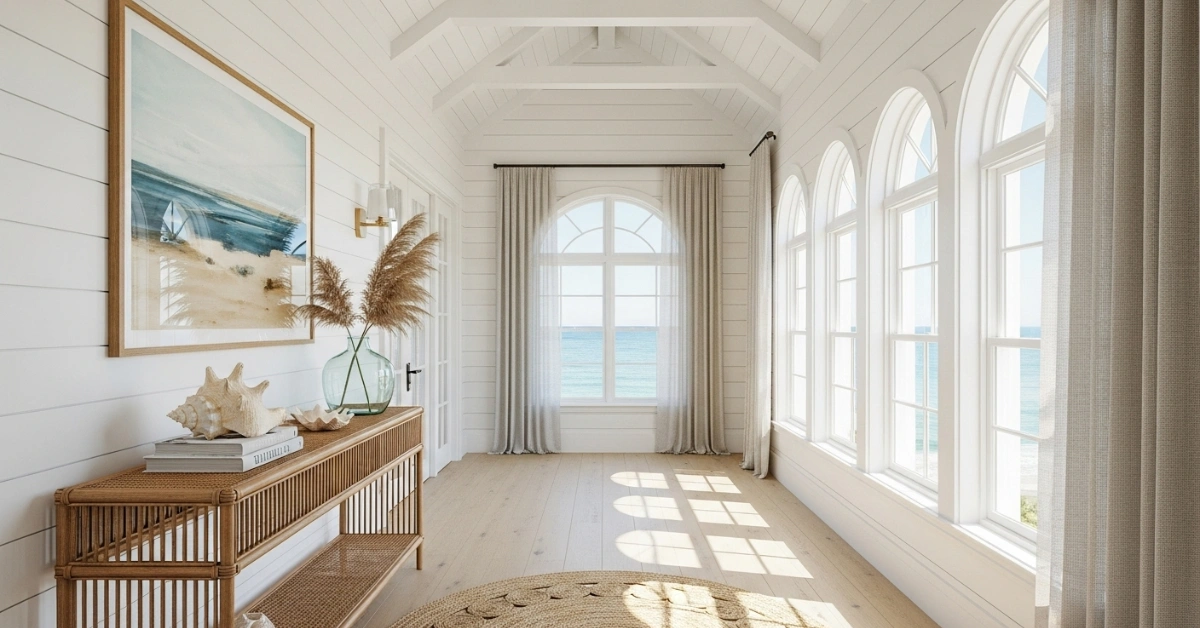Stunning Victorian Hallway Design Ideas and Inspiration
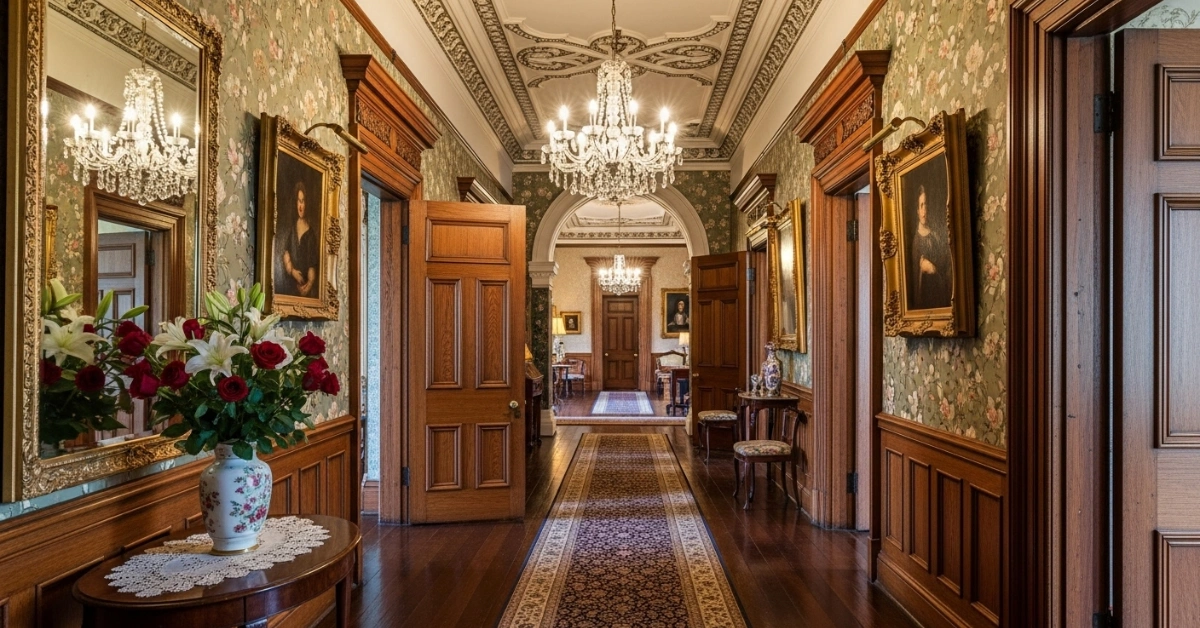
Your hallway is the first impression guests have of your home, yet it’s often overlooked. A poorly designed Victorian hallway can feel dark, cramped, or uninspired, failing to reflect the grandeur of this historic style. Many homeowners struggle to balance authenticity with modern functionality, leaving their entryways lackluster.
The solution lies in embracing the Victorian era’s opulent charm while incorporating practical, timeless design elements. This guide offers 25 detailed ideas to create a stunning Victorian hallway, blending rich aesthetics with functionality. From intricate tiles to statement lighting, you’ll find inspiration to craft an entrance that’s both elegant and welcoming.

Understanding the Victorian Hallway Aesthetic
The Victorian era (1837–1901) was defined by elegance, craftsmanship, and eclectic influences. Hallways in Victorian homes were more than passageways; they were showcases of wealth and style, often adorned with intricate details and luxurious materials. According to the Victoria and Albert Museum, Victorian interiors blended Gothic, Renaissance, and exotic motifs, creating a sense of drama and sophistication.
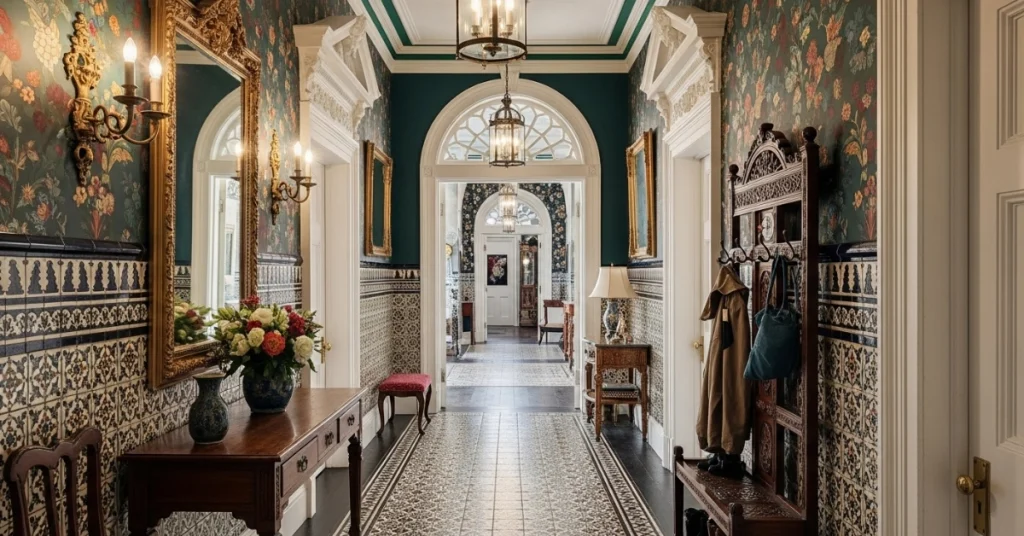
To recreate this aesthetic, focus on rich textures, bold patterns, and a cohesive color palette. A Victorian hallway should feel grand yet inviting, with elements that reflect the era’s attention to detail.
Key Features of a Victorian Hallway
- Ornate Details: Think carved wood, intricate tiles, and decorative moldings.
- Rich Colors: Deep jewel tones like emerald, burgundy, or sapphire, often paired with gold or cream accents.
- Statement Lighting: Chandeliers or lanterns to add elegance.
- Period Furniture: Console tables or coat racks with classic designs.
- Eclectic Touches: Mixes of patterns and textures, inspired by global influences.
Planning Your Victorian Hallway Design
Before diving into decor, assess your hallway’s layout and condition. Victorian hallways are often narrow or long, posing challenges for light and space. Measure your space and note architectural features like arches, cornices, or original flooring. These elements can guide your design choices.
“Start by identifying what makes your hallway unique,” says interior designer Emma Clarkson. “Preserving original features like tiles or dado rails can anchor your design in the Victorian era while allowing modern updates.” Consider your lifestyle too, do you need storage for coats and shoes, or is the hallway purely decorative?
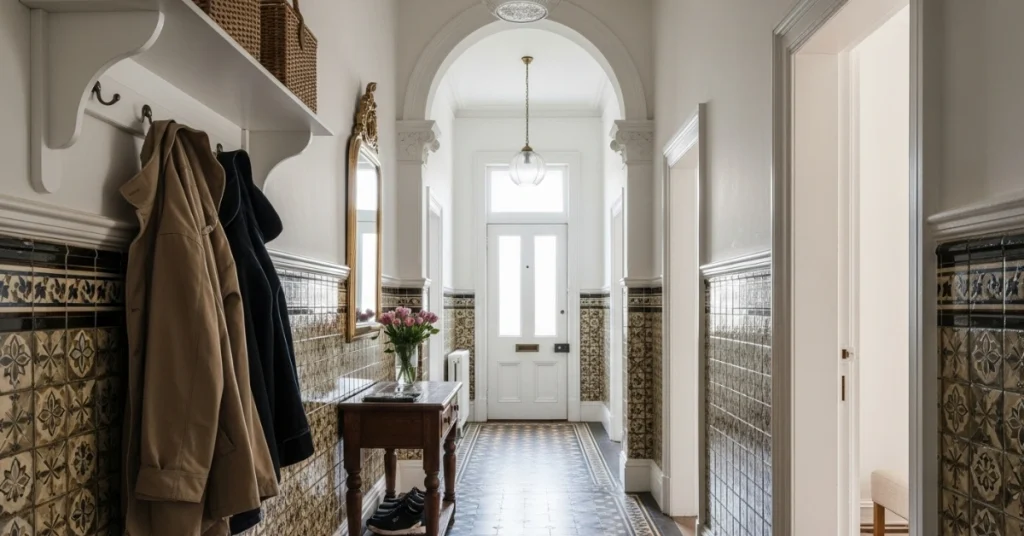
Practical Tips for Planning
- Measure Carefully: Ensure furniture fits without crowding the space.
- Assess Lighting: Natural light is rare in hallways, so plan for layered lighting.
- Check Flooring: Original tiles or wood can be restored for authenticity.
- Set a Budget: Victorian-style decor can be costly, so prioritize key elements like lighting or tiles.
Color Schemes for a Victorian Hallway
Victorian hallways often used bold, moody colors to create drama. Popular choices included deep greens, rich reds, and navy blues, often paired with gold or cream for contrast. For a modern twist, lighter neutrals like soft gray or ivory can brighten narrow spaces while maintaining elegance.
Suggested Color Palettes
- Classic Victorian: Emerald green walls, gold accents, cream trim.
- Modern Victorian: Soft gray walls, navy accents, brass details.
- Romantic Victorian: Dusty rose walls, ivory trim, silver accents.

“Color sets the mood,” says designer James Holt. “For a Victorian hallway, don’t shy away from bold hues, but balance them with lighter tones to avoid a heavy feel.” Test paint samples in your hallway to see how they look under natural and artificial light.
Flooring: The Foundation of Your Victorian Hallway
Victorian hallways often featured intricate floor tiles in geometric or floral patterns. According to Historic England, encaustic tiles, made with colored clay, were a hallmark of the era, offering durability and beauty. If your home has original tiles, restore them. If not, reproduction tiles can achieve the same effect.
Flooring Options
- Encaustic Tiles: Choose black, white, and red patterns for authenticity.
- Hardwood: Polished oak with a runner rug in Persian or floral designs.
- Modern Alternatives: Porcelain tiles mimicking Victorian patterns for budget-friendly durability.
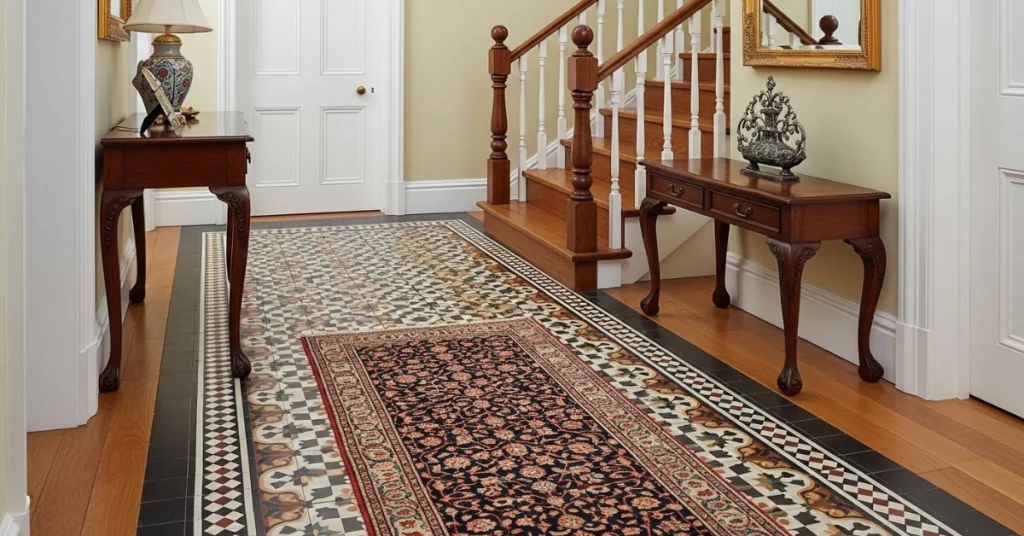
Pro Tip: Add a runner rug to soften the space and protect tiles. Opt for wool or silk blends in intricate patterns to echo the Victorian aesthetic.
Flooring Cost Comparison
| Material | Cost per Sq. Ft. | Durability | Maintenance |
|---|---|---|---|
| Encaustic Tiles | $15–$30 | High | Moderate |
| Hardwood | $8–$15 | High | High |
| Porcelain Tiles | $5–$12 | High | Low |
Lighting: Illuminating Your Victorian Hallway
Lighting is crucial in a Victorian hallway, where natural light is often limited. Chandeliers, wall sconces, or lanterns add elegance and functionality. Choose fixtures with brass, crystal, or stained glass for period authenticity.
Lighting Ideas
- Chandelier: A small crystal chandelier for a grand focal point.
- Wall Sconces: Brass or bronze sconces with frosted glass shades.
- Table Lamps: Place on a console table for layered lighting.
- “Lighting should enhance the hallway’s mood without overwhelming it,” says designer Sarah Langley. “A mix of ambient and accent lighting creates warmth.”
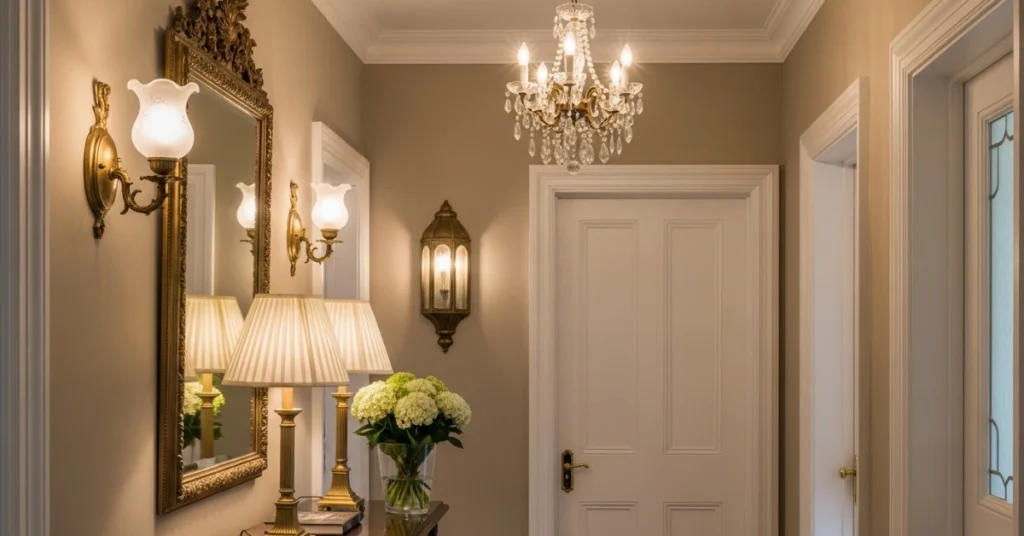
Pro Tip: Install dimmer switches to adjust lighting for day or night, enhancing the hallway’s versatility.
Wall Treatments and Decor
Victorian hallway walls were rarely plain. Wallpaper with damask, floral, or paisley patterns was common, often paired with dado rails or wainscoting. For a modern take, use paint below the rail and wallpaper above for contrast.
Wall Treatment Ideas
- Wallpaper: Choose bold patterns in jewel tones or subtle neutrals.
- Wainscoting: Painted in cream or white for a classic look.
- Picture Rails: Hang artwork or mirrors to add character.
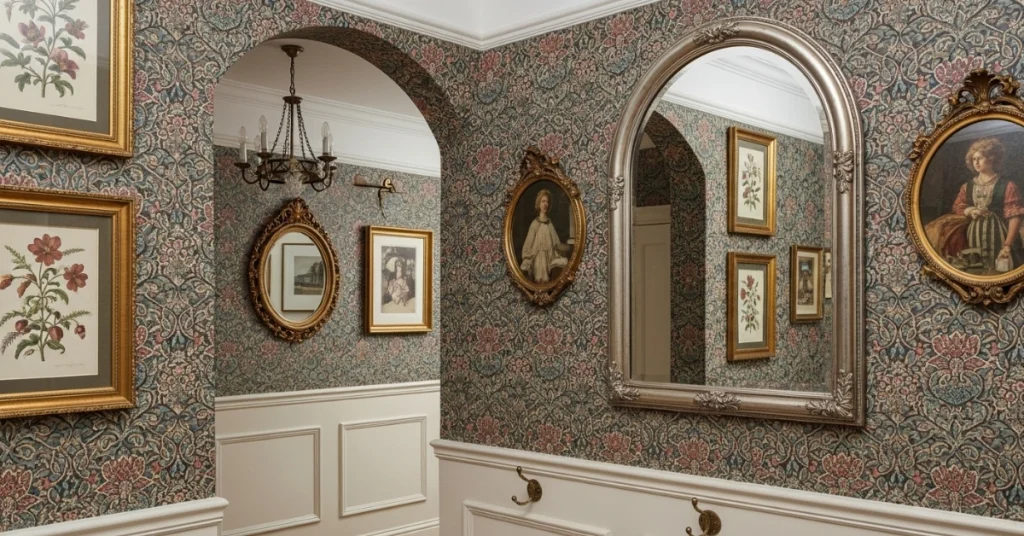
“Wallpaper can transform a hallway,” says designer Laura Thompson. “Opt for reproductions of William Morris designs for authenticity.” Hang a large mirror to reflect light and make the space feel larger.
Wall Decor Inspiration
- Framed Art: Botanical prints or Victorian portraits in ornate frames.
- Mirrors: Oval or arched mirrors with gold or silver frames.
- Wall Hooks: Ornate brass hooks for coats or hats.
Furniture for Functionality and Style
Victorian hallways often included functional yet decorative furniture like console tables, coat racks, or benches. Choose pieces with carved details or curved lines to match the era’s aesthetic.
Furniture Ideas
- Console Table: A narrow mahogany table with a marble top.
- Coat Rack: A freestanding rack with brass hooks.
- Bench: Upholstered in velvet or brocade for seating and storage.
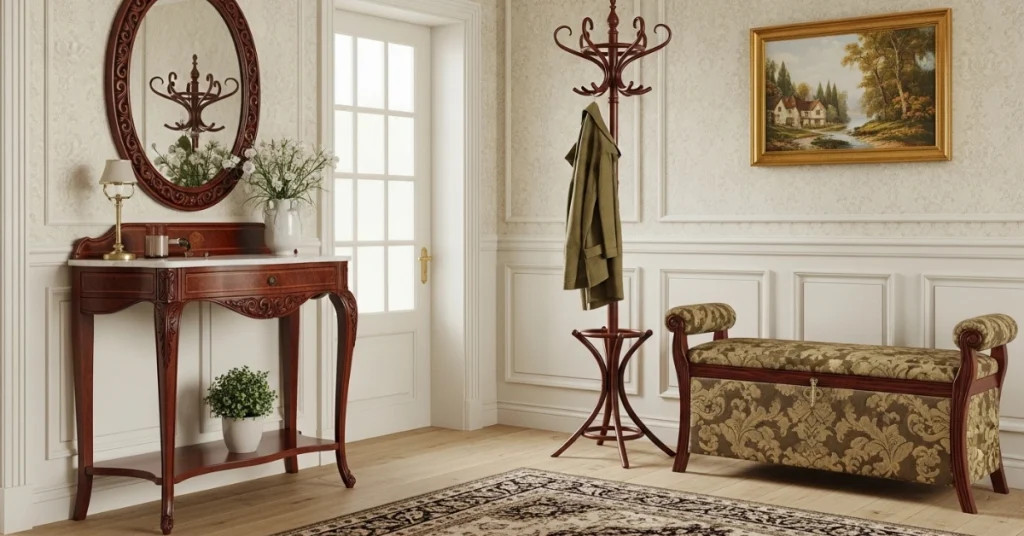
Real-World Example: In a recent project, a narrow Victorian hallway was transformed with a slim console table and a large mirror above it. The table held a decorative vase, while the mirror reflected a chandelier, amplifying light and elegance.
Furniture Dimensions Guide
| Item | Ideal Dimensions | Best For |
|---|---|---|
| Console Table | 30–36” W x 12–15” D | Narrow hallways |
| Coat Rack | 24–36” W x 12–18” D | Small spaces |
| Bench | 36–48” W x 15–18” D | Wider hallways |
Textiles and Soft Furnishings
Textiles add warmth and texture to a Victorian hallway. Rugs, curtains, or upholstered furniture in rich fabrics like velvet or silk enhance the luxurious feel.
Textile Ideas
- Runner Rugs: Persian or Oriental patterns in red, blue, or green.
- Curtains: Heavy drapes in velvet or brocade for doorways or windows.
- Cushions: Add to benches in floral or damask fabrics.
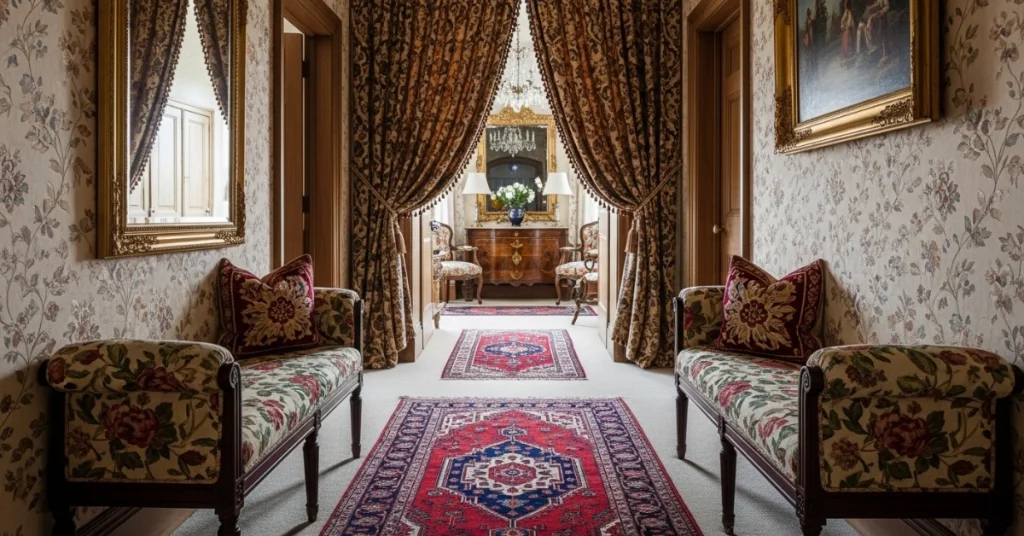
“Textiles soften the hard surfaces of a hallway,” says designer Anna Fields. “A runner rug in a bold pattern can tie the whole design together.”
Accessories: Adding the Finishing Touches
Accessories bring personality to a Victorian hallway. Choose items that reflect the era’s love for detail and craftsmanship.
Accessory Ideas
- Vases: Porcelain or glass vases with floral arrangements.
- Clocks: Wall or table clocks with Roman numerals.
- Trays: Silver or brass trays for keys or mail.
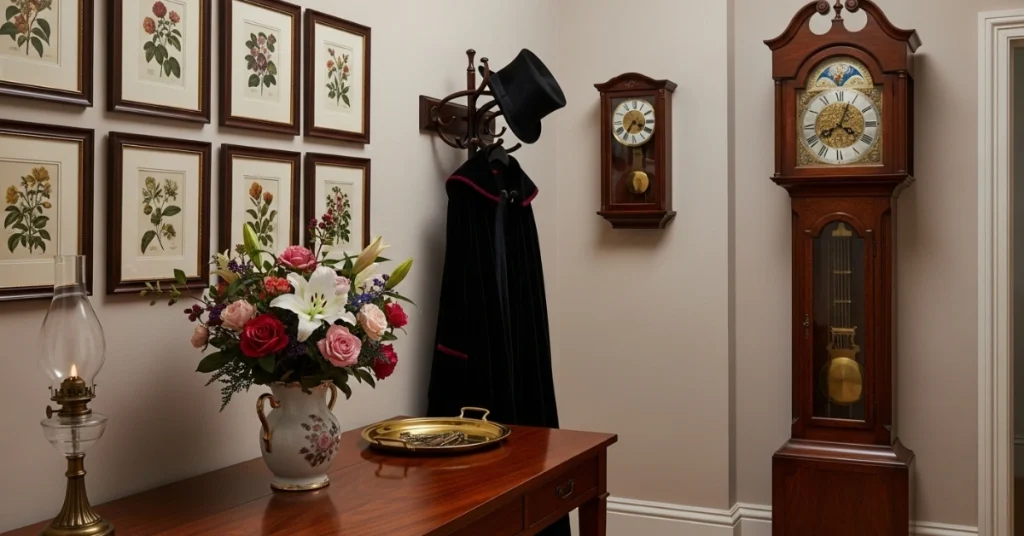
Pro Tip: Group accessories in odd numbers (e.g., three vases) for a balanced, Victorian-inspired look.
Incorporating Modern Elements
While authenticity is key, modern touches can make a Victorian hallway more practical. Smart lighting, hidden storage, or minimalist decor can blend seamlessly with period elements.
Modern Victorian Ideas
- Smart Lighting: Voice-activated lights in vintage-style fixtures.
- Hidden Storage: Built-in cabinets painted to match wainscoting.
- Minimalist Art: Abstract prints in ornate frames for contrast.
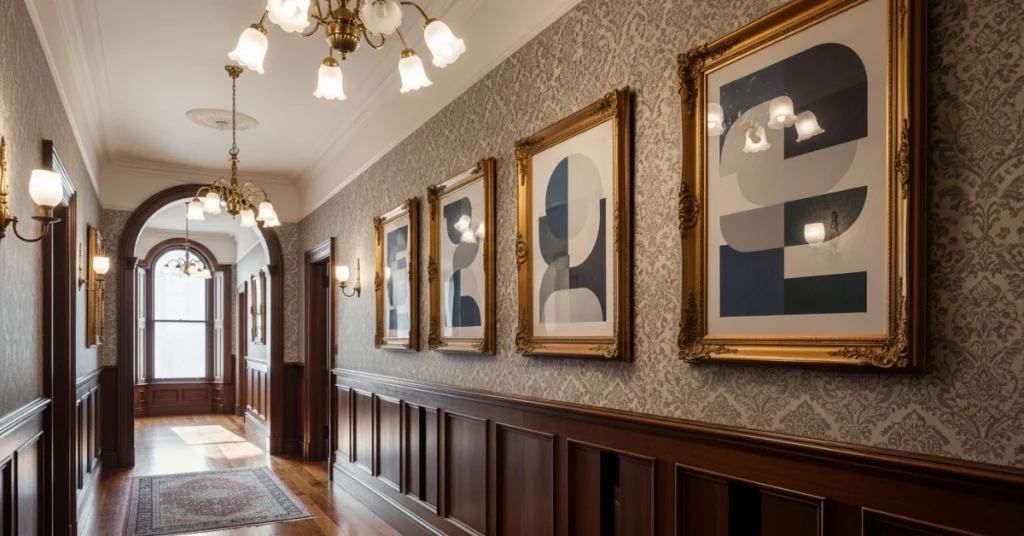
“Modern elements should enhance, not overpower, the Victorian aesthetic,” says designer Mark Reynolds. “A smart thermostat in a brass cover can be both functional and stylish.”
Common Mistakes to Avoid
Designing a Victorian hallway can be tricky. Here are pitfalls to steer clear of:
- Overcrowding: Too much furniture can make a narrow hallway feel cramped.
- Poor Lighting: Relying on one light source creates a gloomy space.
- Ignoring Scale: Oversized pieces overwhelm small hallways.
- Clashing Colors: Stick to a cohesive palette to avoid chaos.
Budget-Friendly Victorian Hallway Ideas
You don’t need a huge budget to create a Victorian hallway. Focus on high-impact, affordable changes.
Budget Tips
- DIY Wallpaper: Use peel-and-stick wallpaper for a temporary, renter-friendly option.
- Thrift Furniture: Refinish secondhand tables or coat racks.
- Reproduction Tiles: Opt for porcelain tiles over expensive encaustic ones.
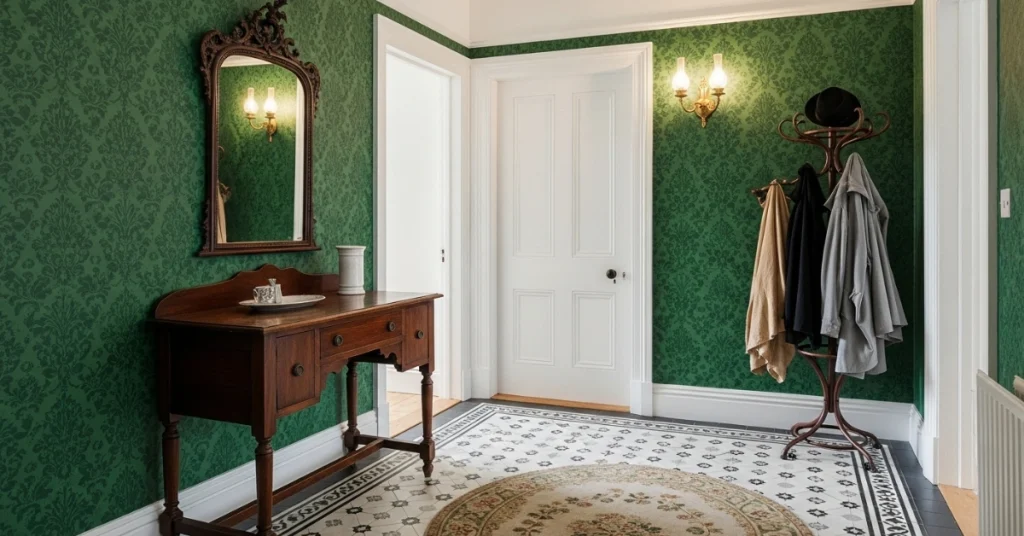
Example: A homeowner transformed their hallway for under $500 by painting the walls a deep green, adding a thrifted console table, and installing reproduction tiles.
Maintaining Your Victorian Hallway
A well-designed hallway requires upkeep to stay stunning. Regular maintenance preserves its beauty and functionality.
Maintenance Tips
- Clean Tiles: Use a mild detergent to avoid damaging patterns.
- Polish Wood: Apply wax to furniture and floors monthly.
- Dust Fixtures: Keep chandeliers and sconces sparkling.
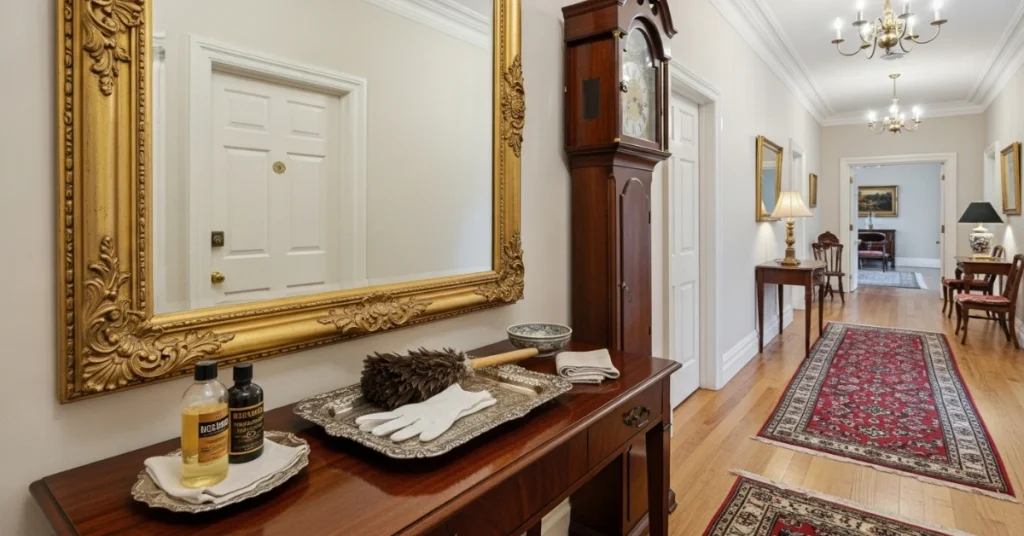
Inspiration from Real Victorian Hallways
For inspiration, look at restored Victorian homes. The National Trust showcases properties like Tyntesfield, where hallways feature original tiles, stained glass, and woodwork. Online platforms like Pinterest also offer ideas from homeowners who’ve blended Victorian charm with modern flair.
Case Study: A London Victorian Home
In a London terraced house, the owners restored their hallway’s original black-and-white tiles and added a brass chandelier. A navy runner rug and a mahogany console table completed the look, creating a timeless yet functional entrance.

Conclusion: Crafting Your Dream Victorian Hallway
A Victorian hallway is more than an entrance, it’s a statement of style and history. By blending rich colors, intricate patterns, and elegant furnishings, you can create a space that’s both authentic and practical. Whether you’re restoring original features or adding reproduction elements, the key is to balance opulence with functionality.
Ready to transform your hallway? Start by assessing your space and choosing one or two statement pieces, like a chandelier or tiled floor.


